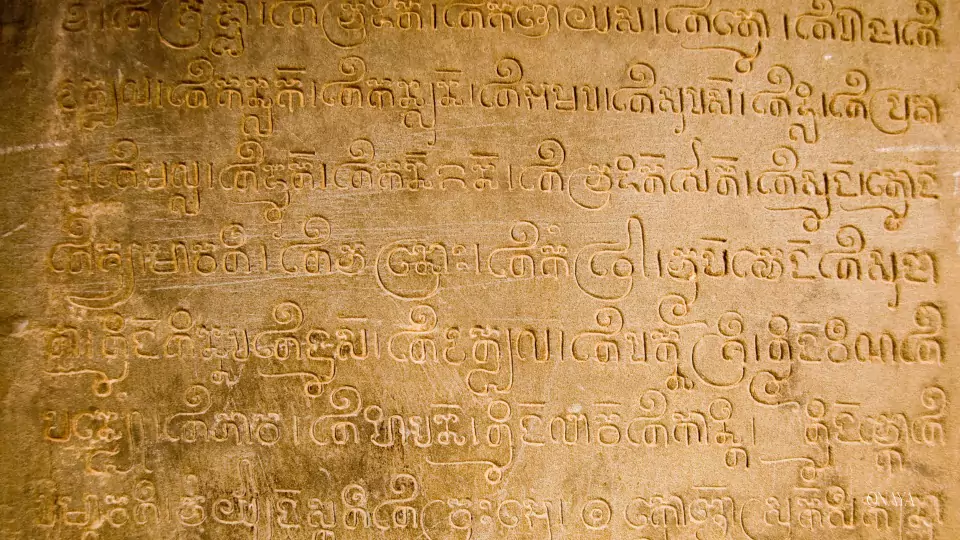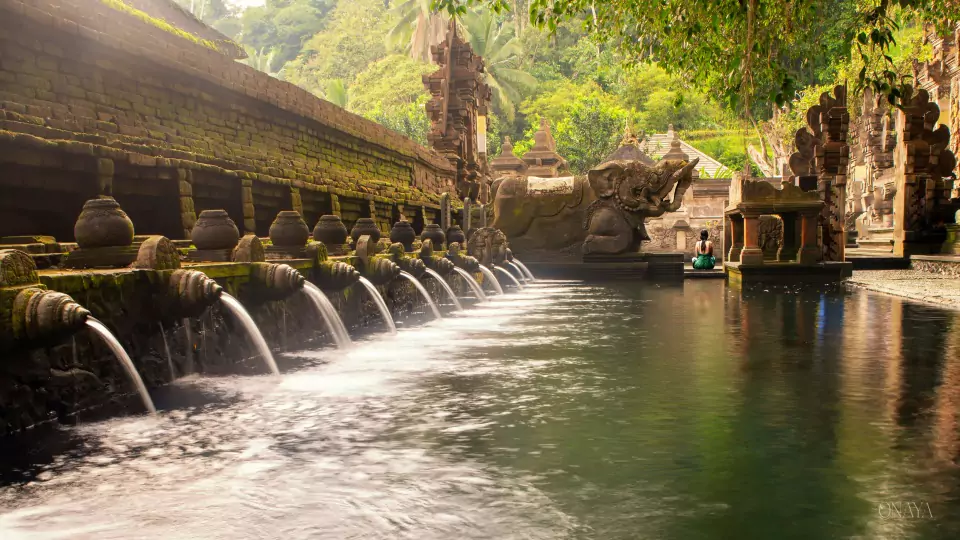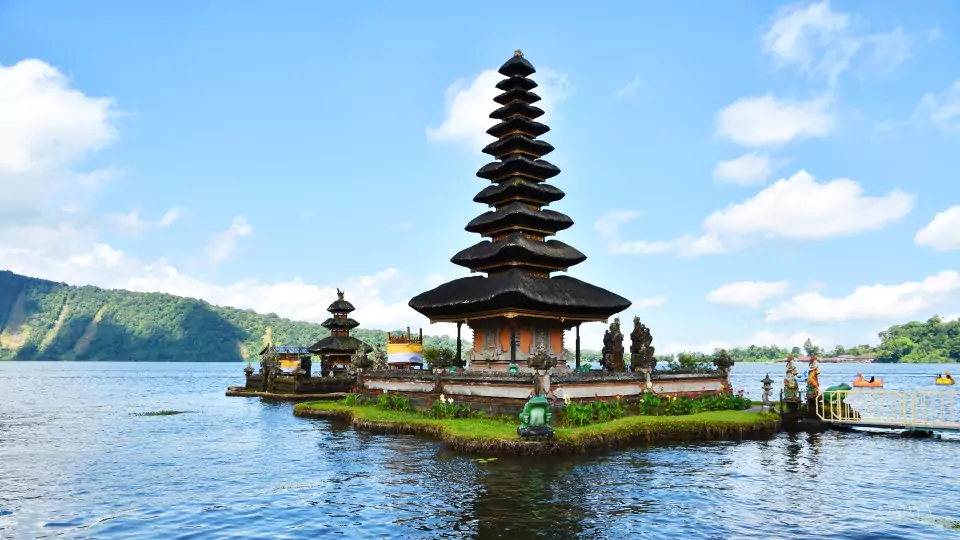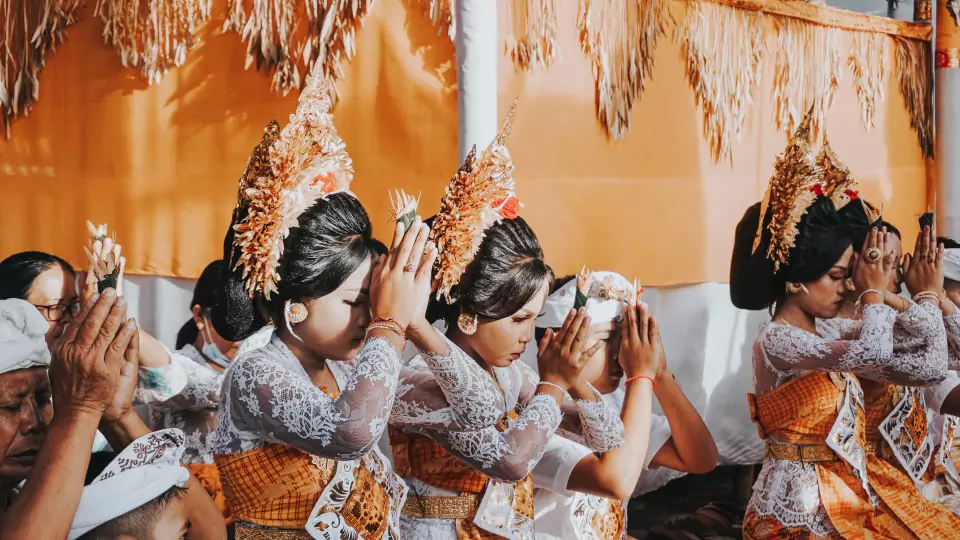Nestled in the Indonesian archipelago, Bali stands as a testament to the enduring power of cultural synthesis and religious adaptation. Known as the “Island of the Gods,” Bali is a unique Hindu enclave in the world’s largest Muslim-majority nation. The journey of Hinduism in Bali spans over two millennia, involving trade, conquest, migration, and spiritual transformation.
In this article, we’ll explore how Bali became Hindu, tracing its roots from early Indian trade interactions to the development of its distinctive brand of Hinduism. We’ll delve into the historical events that shaped Bali’s religious landscape, the unique characteristics of Balinese Hinduism, and the enduring legacy of this cultural fusion that continues to enchant visitors worldwide.
The Early Beginnings of Hinduism in Bali
The story of Hinduism in Bali begins with ancient maritime trade routes connecting India with Southeast Asia. As early as 100 BCE, Indian merchants began contacting the Indonesian archipelago, bringing their cultural and religious practices. Consequently, these initial interactions laid the groundwork for the gradual introduction of Hindu concepts and beliefs to the region. However, concrete evidence of Hindu influence didn’t appear in the historical record until several centuries later.
The First Sanskrit Inscriptions

The 4th and 5th centuries CE marked a significant milestone in the spread of Hinduism to Indonesia, including Bali. During this period, the first Sanskrit inscriptions appeared in the region. These inscriptions provide the earliest tangible evidence of Hindu presence and influence in the archipelago.
Sanskrit played a crucial role in transmitting religious texts, philosophical ideas, and literary traditions. As a result, the appearance of Sanskrit inscriptions suggests that Hindu concepts and practices had begun to take root in the local culture by this time.
The Oldest Dated Inscription
In 914 CE, we encounter another pivotal moment in Bali’s Hindu history. This year marks the date of the oldest known inscription found on the island that specifically mentions a Shivaite priest. This discovery confirms the presence of organized Hindu worship on Bali by the early 10th century and indicates that Shaivism was already established on the island.
The Majapahit Empire: A Turning Point for Hinduism in Bali

While the roots of Hinduism in Bali can be traced back to early trade contacts, the rise of the Majapahit Empire (1293-1520 CE) truly cemented the island’s Hindu character. This powerful Hindu-Buddhist kingdom played a pivotal role in shaping Bali’s religious and cultural landscape.
The Conquest of Bali and Its Cultural Impact
The Majapahit conquest of Bali in 1343 marked a turning point in the island’s religious and cultural evolution. This event led to a significant influx of Javanese immigrants, including nobles, religious leaders, and skilled artisans. These newcomers brought advanced artistic traditions, sophisticated literary traditions, and complex religious practices that blended Hindu and Buddhist elements.
The Fall of Majapahit and the Hindu Exodus to Bali
As influential as the Majapahit Empire was in shaping Bali’s Hindu character, its decline and fall ultimately solidified the island’s status as a Hindu stronghold. As Islamic influence grew in Java, many Hindu nobles, priests, and artists chose to flee to Bali, which remained largely untouched by the spread of Islam.

The Evolution of Balinese Hinduism

The unique form of Hinduism practiced in Bali today, known as Agama Hindu Dharma, is the result of centuries of cultural blending and adaptation. It’s a fascinating synthesis of Indian Hindu teachings, indigenous Balinese beliefs, and elements of Javanese culture.
Unique Characteristics of Balinese Hinduism
- Emphasis on ritual: Daily offerings and elaborate ceremonies are central to religious practice.
- Integration with daily life: Religion permeates every aspect of Balinese culture and society.
- Artistic expression: Religious beliefs are often expressed through various art forms, including dance, music, and sculpture.
- Flexibility and inclusivity: Balinese Hinduism has shown a remarkable ability to incorporate new ideas and practices over time.
The Role of Rituals and Ceremonies in Balinese Hinduism
Rituals and ceremonies play a central role in Balinese Hinduism, serving as the primary means through which individuals connect with the divine and fulfill their spiritual obligations. These practices are deeply woven into the fabric of daily life on the island.
The Significance of Temples and Offerings in Bali’s Hindu Practices

Temples (pura) and offerings (banten) are two of the most visible and important aspects of Balinese Hinduism. They serve as physical manifestations of the Balinese people’s deep spiritual connection to their faith and their environment.
The Legacy of Indian Influences in Bali’s Hindu Culture
While Balinese Hinduism has evolved into a unique form, the legacy of its Indian origins remains visible in many aspects of Balinese culture and religion. This includes temple architecture, art, and traditional performances.
Conclusion
The journey of Hinduism in Bali is a testament to the power of cultural synthesis and adaptation. From its early beginnings through Indian trade contacts to its evolution into the unique Agama Hindu Dharma, Balinese Hinduism continues to enchant and inspire people worldwide with its rich traditions, vibrant rituals, and deep spiritual roots.
FAQs
Q: What is unique about Hinduism in Bali?
A: Hinduism in Bali, known as Agama Hindu Dharma, blends Indian Hindu teachings with indigenous Balinese beliefs and Javanese cultural elements, resulting in a unique form of Hinduism.
Q: How did Hinduism reach Bali?
A: Hinduism reached Bali through early trade contacts with India, the influence of the Majapahit Empire, and the migration of Javanese Hindus fleeing the spread of Islam in Java.
Q: What are some key features of Balinese Hindu practices?
A: Key features include daily offerings, elaborate ceremonies, the integration of religion into daily life, and the expression of religious beliefs through various art forms.
Q: How many temples are there in Bali?
A: Bali is home to over 20,000 temples, ranging from small family shrines to large public temples.
Q: What is the significance of Nyepi in Balinese Hinduism?
A: Nyepi, the Balinese New Year, is a day of complete silence and inactivity across the island, serving as a time for self-reflection, meditation, and spiritual purification.
Book your stay with us here and start your Bali Journey 🙂

